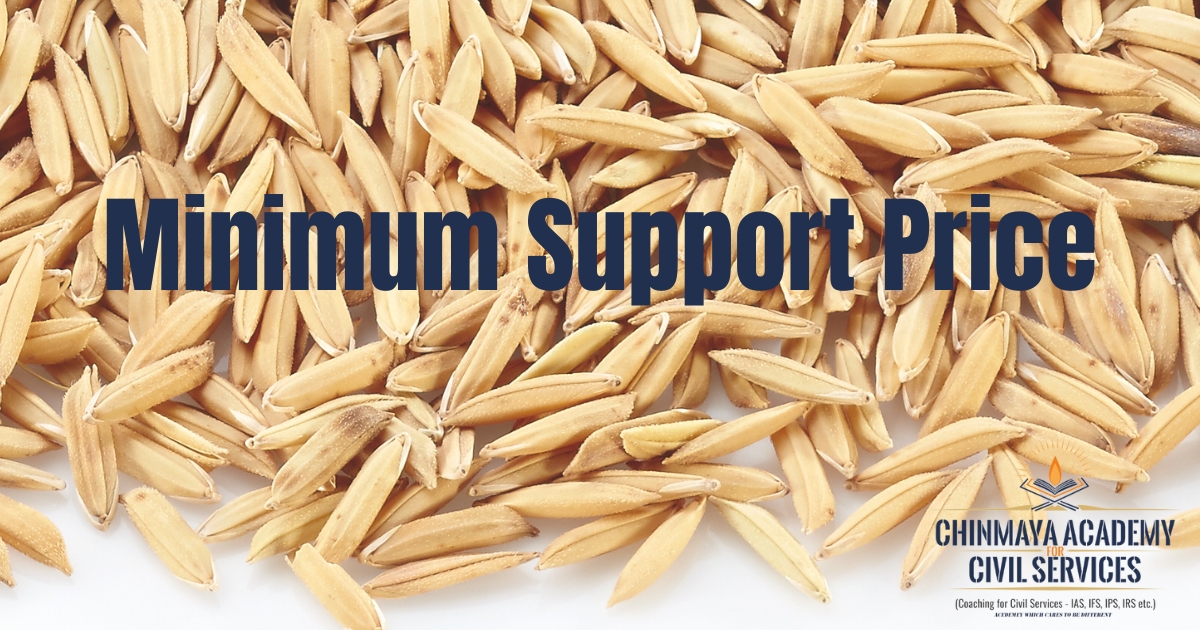 The Government of India sets Minimum Support Price (MSP) for certain agricultural products. MSP is a safety net for farmers that ensures a minimum guaranteed price for their produce. MSP protects farmers from market fluctuations and ensures a fair return on their investment.
The Government of India sets Minimum Support Price (MSP) for certain agricultural products. MSP is a safety net for farmers that ensures a minimum guaranteed price for their produce. MSP protects farmers from market fluctuations and ensures a fair return on their investment.
- The MSP is based on a calculation of at least one-and-a-half times the cost of production incurred by the farmers.
- MSP is announced before the sowing season so that farmers can make an informed decision.
Objectives
- Support farmers from distress sales at severely low prices
- Procure foodgrains for public distribution
- Incentivize farmers to grow crops that are short in supply
Benefits
- Protects farmers from market fluctuations
- Ensures a fair return on their investment
- Ensures adequate food grain production in the country
- Incentivizes farmers to grow crops that are short in supply
- Has the potential to quadruple farmers’ income
Historical Background
- The Government of India introduced the Minimum Support Price (MSP) in 1966-67.
- The MSP was initially an incentive for farmers to adopt technology and increase agricultural productivity.
- The MSP was first introduced for wheat and later expanded to include other essential food crops.
- The MSP was introduced after India faced a major deficit in cereal production at the time of Independence.
- India was actively looking to shore up its food reserves and prevent shortages during the Green Revolution in the 1960s.
- The MSP is a “minimum price” for any crop that the government considers as remunerative for farmers and hence deserving of “support”.
Facts
| Father of MSP | Dr Frank W Parker |
| Ministry | Mo Agriculture |
| Established in | 1966 |
| Discovered | K Jha Committee |
| First crop | Wheat |
- The first crop to get an MSP was wheat, which got an MSP fixed at 54 per quintal.
- Now there are presently 23 Crops
Cereals
- Paddy
- Wheat
- Barley
- Jowar
- Bajra
- Maize
- Ragi
Pulses
- Gram
- Arhar/tur
- Moong
- Urad
- Lentil
Oilseeds
- Groundnut
- Rapeseed/mustard
- Toria
- Soyabean
- Sunflower seed
- Sesamum
- Safflower seed
- Niger seed
Commercial crops
- Copra
- Raw cotton
- Raw jute
- De-husked coconut
Agriculture is the backbone of the Indian Economy”- said Mahatma Gandhi. Even today, the situation is still the same, with almost the entire economy being sustained by agriculture, which is the mainstay of the villages. It contributes 16% of the overall GDP and accounts for employment of approximately 52% of the Indian population. Rapid growth in agriculture is essential for the nation’s self-reliance and exports.
 Chinmaya IAS Academy – Current Affairs Chinmaya IAS Academy – Current Affairs
Chinmaya IAS Academy – Current Affairs Chinmaya IAS Academy – Current Affairs



